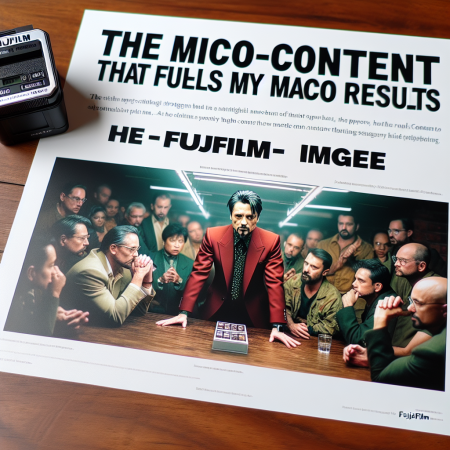The Micro-Content Strategy That Fuels My Macro Results
Understanding Micro-Content
What is Micro-Content?
When I first started diving into digital marketing, I stumbled upon the concept of micro-content. It’s basically bite-sized snippets of information, like social media posts, short videos, or infographics that pack a punch. Imagine your audience skimming through endless feeds; wouldn’t you want to grab their attention in just a few seconds?
This kind of content has become the bread and butter for engaging younger audiences who are always on the go. I realized that to make a real impact, my content needed to be short, engaging, and directly to the point. Think about catchy headlines, punchy visuals, and content that resonates almost instantly.
Micro-content serves as more than just hooks; it’s a strategic way to drive traffic to your larger, more detailed pieces of content. When people find value in these little nuggets, they’re much more likely to dive deeper into what you’re offering. That’s when I saw the magic of micro-content unfold in my marketing strategy.
Creating Engaging Micro-Content
The Importance of Visuals
Visual appeal can make or break your micro-content. I learned pretty quickly that posts packed with appealing images or videos get way more engagement than text-heavy bits. Think about it—scrolling through Instagram or TikTok, it’s the visuals that grab our attention first!
I love to experiment with different formats, like memes, GIFs, and short videos, because they not only convey messages effectively but also encourage sharing. People love to share content that’s easy to digest and visually appealing—this is how I started gaining traction in my audience.
But it’s not just about looking good! I always make sure my visuals align with my branding and messaging. So, whether it’s the colors I choose or the overall aesthetic, it all has to resonate with the vibe I want to project. This cohesion helps me build trust and recognition over time.
Distributing Micro-Content Wisely
Choosing Platforms Wisely
Not all platforms are created equal when it comes to micro-content. I had to figure out where my audience was hanging out. You won’t find the same engagement on Facebook as you would on TikTok, and that’s okay! Each platform has its own nuances and styles.
By tailoring my micro-content for each platform, I found that I could engage with my audience much more effectively. For example, Instagram isn’t just for pretty pictures; it’s also got reels that let you share quick tips. On Twitter, snappy takes on hot topics can drive a ton of engagement. I make it a point to adapt and remix my content to fit the platform’s culture.
In addition, by analyzing performance metrics on these platforms, I was able to see what worked and what didn’t. This data-driven approach helped me refine my strategy further so that my efforts were focused on what truly resonated with my audience.
Building a Content Calendar
Consistency is Key
You know what’s super important? Consistency. I used to post erratically, and I noticed that my engagement was just all over the place. Then I introduced a content calendar, and let me tell you, it was a game-changer!
A content calendar helps me plot out my micro-content ahead of time. It’s not just about scheduling; it’s about being strategic about themes, topics, and even seasonal trends that I can leverage. Now, I have a plan, and that plan keeps my audience engaged and anticipating my next move.
I also incorporate time for spontaneity because, hey, sometimes trends pop up out of nowhere! Balancing my pre-planned posts with timely content keeps things fresh and exciting for my followers. It makes me feel connected, and that connection translates to trust and loyalty.
Expanding Micro-Content into Macro Results
Driving Traffic to Long-Form Content
One of the best uses of micro-content? It leads to my long-form content! When I create a compelling snippet, I always include a call-to-action that directs people to my blog or YouTube channel. This way, I can dive deeper into topics that really matter.
Every micro-content piece serves as bait that leads my audience into the ocean of more extensive material. I spruced up my blog posts by using snippets from my social media posts, creating a cohesive user experience where people feel they can explore without getting lost.
Plus, when I highlight key takeaways or interesting quotes from my longer content in micro-form, it encourages my audience to engage with both. The synergy between my micro and macro strategies not only has driven more traffic but also boosted my overall brand presence online!
FAQs
1. What is micro-content and why is it important?
Micro-content refers to short snippets of engaging information designed to capture attention quickly. It’s essential because it caters to our fast-paced digital landscape where people often skim content.
2. How do visuals impact micro-content effectiveness?
Visuals significantly enhance micro-content by making it more appealing, shareable, and engaging. They capture attention faster than text and can quickly convey messages or emotions.
3. Why should I create a content calendar?
A content calendar helps you plan and maintain consistency in your posting schedule. It ensures you stay organized and allows you to strategically align your content with trends or themes.
4. How do I adapt my micro-content for different platforms?
Each platform has its unique style, so it’s best to customize your content to fit that environment. For example, Instagram is visual-focused, while Twitter emphasizes short, snappy text.
5. How can micro-content drive traffic to my long-form content?
By creating engaging micro-content that includes calls-to-action, you can effectively guide your audience towards more in-depth articles or videos, enhancing user experience and increasing traffic to your main content channels.
Related Content
- Mastering the Art of Coaching: Tips for Building a Top-Notch Business
- Monetize community engagement by rolling out event-based coaching summits for 2025
- How I Generate 50 Content Ideas in 30 Minutes
- The Platform Pivot That Saved My Dying Online Business
- Building a Thriving Coaching Community for Your Business


